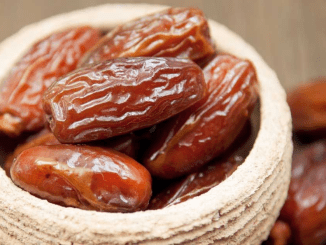
Why Nasturtiums Deserve a Spot in Every Backyard Garden
If you’re dreaming of a backyard filled with color, flavor, and natural charm—without needing a green thumb—nasturtiums are your secret weapon. These vibrant blooms in red, yellow, and orange aren’t just eye candy. They’re nature’s multitaskers—pest repellents, pollinator magnets, and gourmet ingredients all rolled into one. Want to grow smarter, not harder? Let’s dive into why nasturtiums are a backyard garden’s best-kept secret.
Colorful and Clever: The Benefits of Growing Nasturtiums
1. Natural Pest Control That Works While You Chill
Picture this: your tomatoes are thriving, your cucumbers are stretching, and you didn’t even touch a pesticide. Why? Because nasturtiums are your garden’s front-line defense. Acting as a “trap crop,” they lure aphids, caterpillars, and whiteflies away from your vegetables. These pests would rather feast on nasturtiums than your juicy peppers, giving your main crops the peace to grow. It’s like hiring bodyguards made of flowers.
2. Calling All Bees and Butterflies—Pollinator Paradise
You want a lush, productive garden? Then roll out the red carpet for pollinators. Bees, butterflies, and helpful insects are drawn to nasturtiums like kids to candy. Their showy petals and sweet nectar make them a hotspot for buzzing garden allies. That means better pollination for your zucchini, strawberries, and beans—and bigger harvests for you.
3. Easy-Going and Tough: Grow Them Anywhere
No fancy fertilizers? No problem. Nasturtiums actually prefer poor soil. They’re the laid-back rebels of the plant world—thriving where others give up. Drought-tolerant, fast-growing, and fuss-free, they spread quickly through garden beds or spill beautifully from hanging baskets. Whether you’re a rookie gardener or a seasoned pro, these plants won’t disappoint.
4. They’re Edible—and They Taste Amazing
Forget boring greens. Nasturtiums bring a peppery punch that turns ordinary meals into culinary adventures. Every part is edible—flowers, leaves, even seeds. Whether you’re tossing them into salads or pickling the seeds like capers, they’re a flavor-packed addition to your kitchen. Beauty and function in one tasty package.
How to Use Every Edible Part of Nasturtiums Like a Pro
Video : Nasturtiums: Edible leaves and flowers
Bright Blossoms: Nature’s Most Delicious Garnish
Nasturtium flowers are more than decoration—they’re a flavor bomb. Their arugula-like kick brightens up salads, appetizers, or even cocktails.
- Toss them over leafy greens for a fiery bite.
- Top soups or deviled eggs for a stunning garnish.
- Stuff them with cream cheese or herbs for a gourmet appetizer that looks like it came from a five-star restaurant.
Leaf It to the Leaves: Zesty, Green Goodness
The leaves are like spicy spinach with a bold, mustardy note.
- Mix fresh leaves into salads and wraps.
- Blend them into pesto with garlic and walnuts for a peppery twist.
- Chop them into omelets for extra flavor and color.
Savvy Seeds: The Capers You Didn’t Know You Needed
Before the seeds dry out, you can turn them into “poor man’s capers.”
- Pickle green seeds in vinegar and salt.
- Crush dried seeds into a DIY peppery seasoning.
- Add to marinades for an unexpected tang.
How to Grow Nasturtiums Without Breaking a Sweat
Planting Basics
- When to Start: After the last frost in spring, or indoors 2-3 weeks before.
- Soil Secrets: They thrive in lean, well-drained soil. Too much fertilizer means too much leaf, not enough flower.
- Sunshine Needs: They love full sun but can handle a little shade.
Water Wisely
Water only when the soil feels dry. These guys hate soggy feet. Overwatering leads to mushy roots and sadness.
Maintenance Tips
- Pinch and Prune: Light trimming keeps them bushy and blooming.
- Deadhead for More Flowers: Snip off fading blooms to make room for new ones.
- Bug Patrol: If aphids take over, a sharp water spray usually sends them packing.
Harvest Like a Chef
- Flowers: Harvest when fully open and fresh. Use them that day or refrigerate for up to 48 hours.
- Leaves: Young leaves are best—tender and less intense.
- Seeds: Harvest green and pickle, or dry and store for later.
Hidden Health Perks of Nasturtiums
These cheerful plants aren’t just good-looking—they’re good for you too.
- Vitamin C Powerhouse: Supports immune health and helps fight infections.
- Loaded with Antioxidants: Protects your cells from daily damage.
- Natural Antibacterial Properties: A traditional folk remedy for skin and sinus issues.
- Mineral-Rich: Contains iron and calcium for added wellness.
Creative Ways to Use Nasturtiums Beyond Cooking
Make a Natural Dye
Soak flowers in hot water to create gentle, nature-inspired fabric dyes. The result? Earthy yellows and oranges perfect for homemade textiles.
Craft Homemade Infusions
Steep flowers and leaves into vinegars, teas, or oils. The flavor is tangy and floral, great for summer sips or salad dressings.
Video : I planted nasturtiums ONCE..
Add to Floral Arrangements
Their vibrant colors and wild trailing stems are perfect for rustic bouquets and whimsical centerpieces.
Final Thoughts: Why You Should Grow Nasturtiums Today
Nasturtiums are more than just a pretty flower. They’re smart, edible, hardworking plants that bring flavor to your meals, protection to your crops, and a whole lot of joy to your garden. Whether you’re a backyard hobbyist or someone planting a few pots on your balcony, nasturtiums offer beauty, bounty, and benefits in every petal. Grow them once, and you’ll wonder how your garden ever lived without them.


